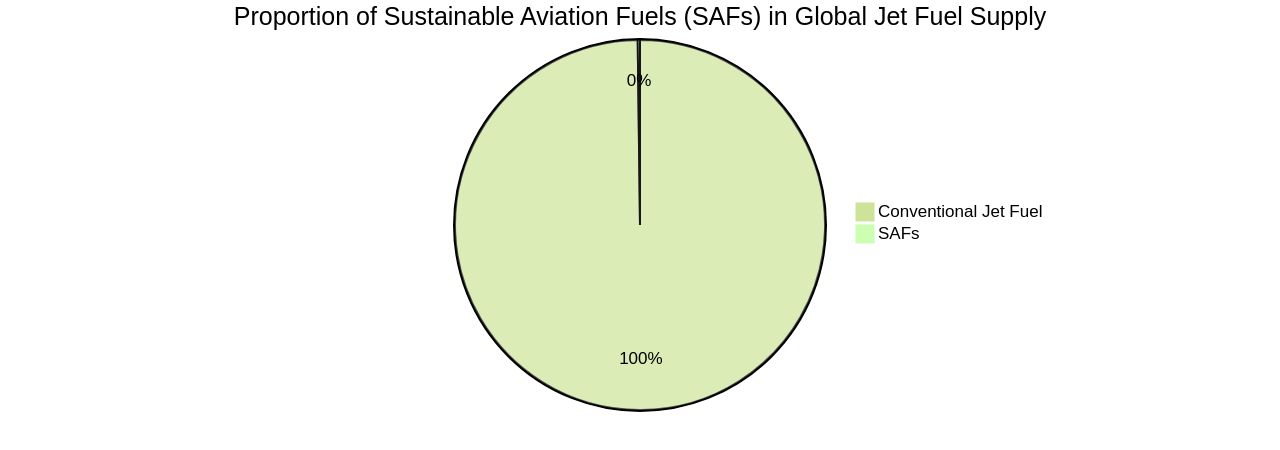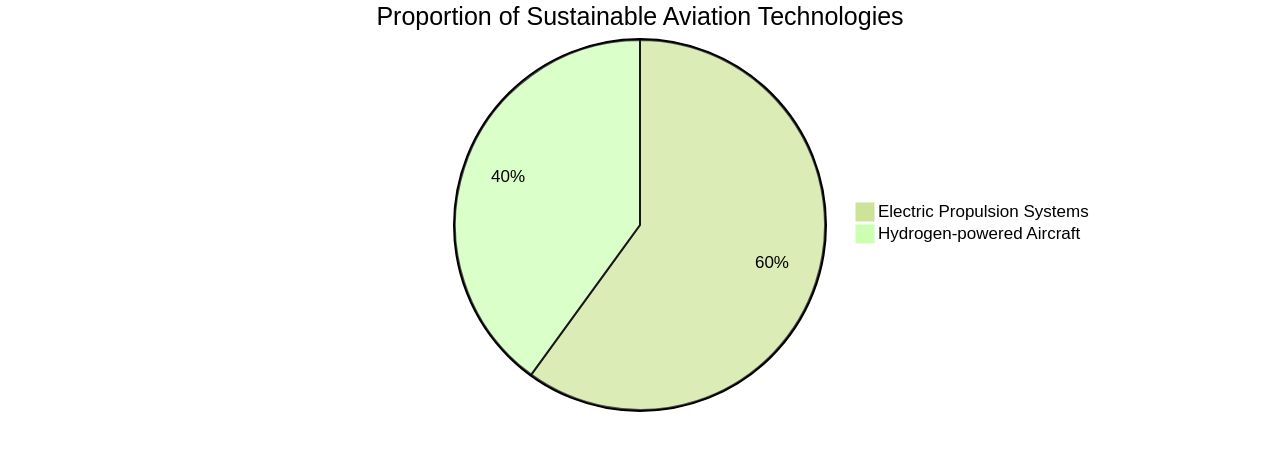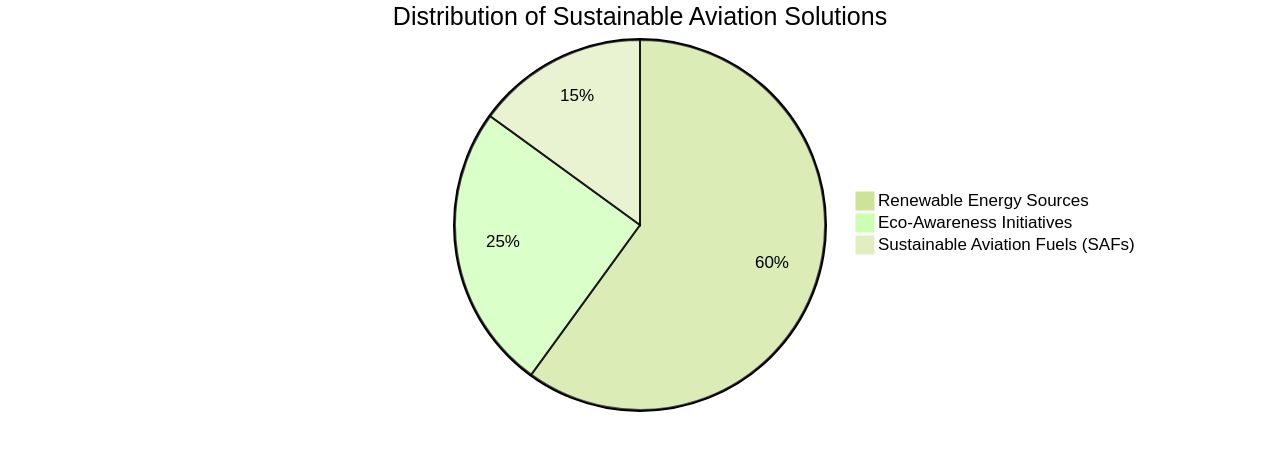Introduction
The aviation industry is actively seeking ways to achieve net-zero emissions by 2050, with a focus on sustainable solutions. From the use of sustainable aviation fuels (SAFs) to advancements in electrification and hydrogen-powered aircraft, as well as improvements in aircraft design and efficiency, the industry is making strides towards a more sustainable future.
However, challenges such as cost, scale-up, and technological progress must be overcome to fully realize the potential of these solutions. Join us as we explore the latest developments in the renewable fuels industry and their implications for the aviation sector.
The Importance of Sustainable Solutions in Aviation
The aviation industry, responsible for around 2.5% of global CO2 emissions and 4% of total global warming, is actively seeking ways to achieve net-zero emissions by 2050. Sustainable aviation fuels (SAFs), derived from renewable sources such as used cooking oil, forestry residues, and synthetic e-fuels, are being seen as a viable solution.
These fuels are compatible with existing aircraft and require minimal changes to infrastructure. However, the journey towards a sustainable aviation future is not without hurdles.
The production of SAFs must avoid causing environmental harm or contributing to deforestation. Furthermore, SAFs currently cost three to four times more than conventional jet fuel and constitute a minuscule 0.2% of the global jet fuel supply as of 2022, underscoring the need for a substantial scale-up.
SAFs are predicted to cut aviation emissions by up to 60% by 2040, but this potential can only be realized if the global SAF market expands considerably. Alliances like the one between Airbus and Emirates, which aims to ensure all Airbus aircraft are 100% SAF-capable by 2030, are instrumental to this expansion.
Alongside SAFs, technologies such as Flexiforming, introduced by Unifuel.tech, offer potential pathways to a sustainable aviation future. This technology, applicable in idle hydrotreaters or reformers, enables operators to regulate their decarbonization rate, thus reducing both capital expenditure and carbon intensity. Unifuel. Tech is responsive, promising to reply to queries within 24 hours, and seeks details about the operator's feeds, target products, and existing facilities to tailor Flexiforming optimally. Coupled with SAFs, technologies like these can significantly shrink the aviation industry's environmental impact. However, the success of these solutions hinges on several factors, including policy support, industry endorsement, and technological progress.

Sustainable Aviation Fuels: A Promising Alternative
As the world grapples with a fluctuating global energy system, the aviation industry is turning to Sustainable Aviation Fuels (SAFs) for a solution. These fuels, derived from diverse feedstocks like biomass, waste products, natural oils, fats, and hydrogen, are poised to play a significant role in reducing emissions. However, the path to a broad adoption of SAFs is not without hurdles.
Despite the successful execution of numerous test flights powered entirely by SAFs, they currently represent less than 0.2% of the global jet fuel supply. The road to increasing this percentage is fraught with challenges, primary among them being the cost of SAFs, which is currently 3 to 4 times higher than conventional jet fuel. Additionally, questions linger about the sustainability and affordability of Safe, as well as competition for feedstocks and efficient scales of production.
Yet, the aviation industry's commitment to achieving net-zero emissions by 2050 is unwavering. Major players like Airbus are championing the adoption of Safe and aim for 100% SAF-compatibility in their aircraft by 2030. While the journey towards a sustainable aviation future is complex, the industry's resolve to leverage SAFs underscores their crucial role in achieving this goal.

Electrification and Hydrogen-Powered Aircraft
The aviation industry is on the cusp of a sustainable revolution, driven by the increasing adoption of electric and hydrogen technologies. Companies like Dovetail Electric Aviation are at the forefront of this transformation, developing 100% electric propulsion systems for short-haul flights.
This innovation eliminates the need for Avgas or Jet A1 fuel and has the potential to reduce global carbon dioxide emissions by over 50 million tons, equivalent to the emissions of flights under 500km. Moreover, Dovetail's operations are expected to abate 1 million tonnes of carbon dioxide per year after five years, accounting for 2% of the global regional aviation emissions.
Concurrently, advancements in hydrogen-powered aircraft are also making strides. Airbus, in collaboration with ArianeGroup, has successfully tested a system that feeds hydrogen to an aeronautical gas turbine engine under the Hyperion project.
This project aims to develop practical hydrogen commercial airliners by 2035, signifying a major leap in green aviation. However, the shift to hydrogen aircraft entails challenges, including the need for complete systems engineering and the establishment of safety protocols for hydrogen use at airports. Despite these hurdles, about 200 airports have been identified for potential hydrogen use, and feasibility studies are being conducted. These technological advancements, while still in their nascent stages, hold immense promise for a sustainable and decarbonized future in aviation.

Advances in Aircraft Design and Efficiency
The quest for sustainable aviation encompasses more than just the creation of alternative fuels and propulsion mechanisms. It also involves the transformation of aircraft design and efficiency. Key aircraft manufacturers are directing resources towards research and development with the aim of creating aircraft with improved fuel efficiency, reduced drag, and superior aerodynamics.
Such advancements are made possible through the use of lightweight materials and cutting-edge technologies like advanced wing designs and hybrid-electric systems. Consequently, the aviation industry is experiencing improved fuel efficiency, reduced emissions, and a smaller environmental footprint. For instance, a collaborative design by Boeing and NASA predicts an 8-10% reduction in fuel consumption in aircraft with 130-210 seats, thanks to an innovative airframe design featuring a high-aspect-ratio wing.
However, this increased wingspan necessitates a foldable wing to ensure compatibility with existing airport infrastructures, which adds weight to the wing and decreases its performance. Moreover, the International Air Transport Association's 2021 declaration that the global aviation industry will achieve carbon neutrality by 2050 is not without its challenges, as highlighted in a report on sustainable aviation. The report underscores that the aviation industry contributes approximately 3.5% of the human-induced changes to the Earth’s energy balance, with CO2 emissions accounting for a third of this impact.
While electric aviation is gaining traction, it is currently viewed as a niche market due to the lower energy density of batteries compared to jet fuel. However, a study conducted by Chalmers University of Technology in Sweden illustrates the potential of electric aviation to reduce its climate impact within a quarter of the aircraft's lifespan, provided green electricity is utilized. Such advancements in technology and design, coupled with the commitment to research and development, highlight the aviation industry's potential to significantly reduce its environmental impact and move towards a more sustainable future.

The Path to a Sustainable Aviation Industry
The aviation sector is navigating towards sustainability, with a network of stakeholders crafting policies to promote renewable solutions. The journey involves more than investing in research and infrastructure or green innovation training.
It also entails enlightening passengers about the environmental impact of air travel, nurturing a culture of eco-awareness. Despite the challenges on the road to aviation sustainability, the potential gains are significant.
The industry is making progressive steps, setting ambitious targets and taking immediate actions to meet them. The focus now goes beyond reducing emissions during a plane's operational phase to include the entire life cycle of an aircraft.
The industry's commitment to achieving net-zero CO2 emissions by 2050 is an applaudable effort. However, achieving this target necessitates a holistic approach that incorporates the whole sustainable aviation chain.
Sustainable aviation fuels (SAFs), derived from diverse sources, are potential solutions. Yet, it is essential to validate the sustainability credentials of these fuels to prevent exacerbating other environmental issues.
Among the available solutions, Unifuel.tech offers a decarbonization solution called flexiforming. This technology allows operators to determine their decarbonization pace and can be deployed in an idle hydrotreater or reformer, reducing both capital expenditure and carbon intensity. The company is responsive, addressing inquiries within 24 hours, and can provide optimal applications for flexiforming based on information about feeds, target products, and existing facilities. In striving for a sustainable aviation industry, sustainability commitments should be realistic and responsible. Companies should document and celebrate their sustainability initiatives to inspire further action. As the adage goes, 'Sustainability is a company commitment', and it is crucial for the future of aviation.

Conclusion
The aviation industry is actively pursuing sustainable solutions to achieve net-zero emissions by 2050. Sustainable aviation fuels (SAFs) offer a viable alternative to conventional jet fuel, but cost and scale-up challenges need to be addressed.
Electrification and hydrogen-powered aircraft show promise, but hurdles such as systems engineering and safety protocols remain. Advances in aircraft design and efficiency contribute to improved fuel efficiency and reduced emissions, although foldable wings present challenges.
Collaboration among stakeholders, policies promoting renewables, passenger awareness, and validation of SAF sustainability are crucial for a sustainable aviation industry. The industry's commitment to achieving net-zero CO2 emissions is commendable, and embracing SAFs, electrification, hydrogen-powered aircraft, and efficient design can lead to a more sustainable future. Companies should document sustainability initiatives to inspire further action and ensure responsible practices in aviation.




